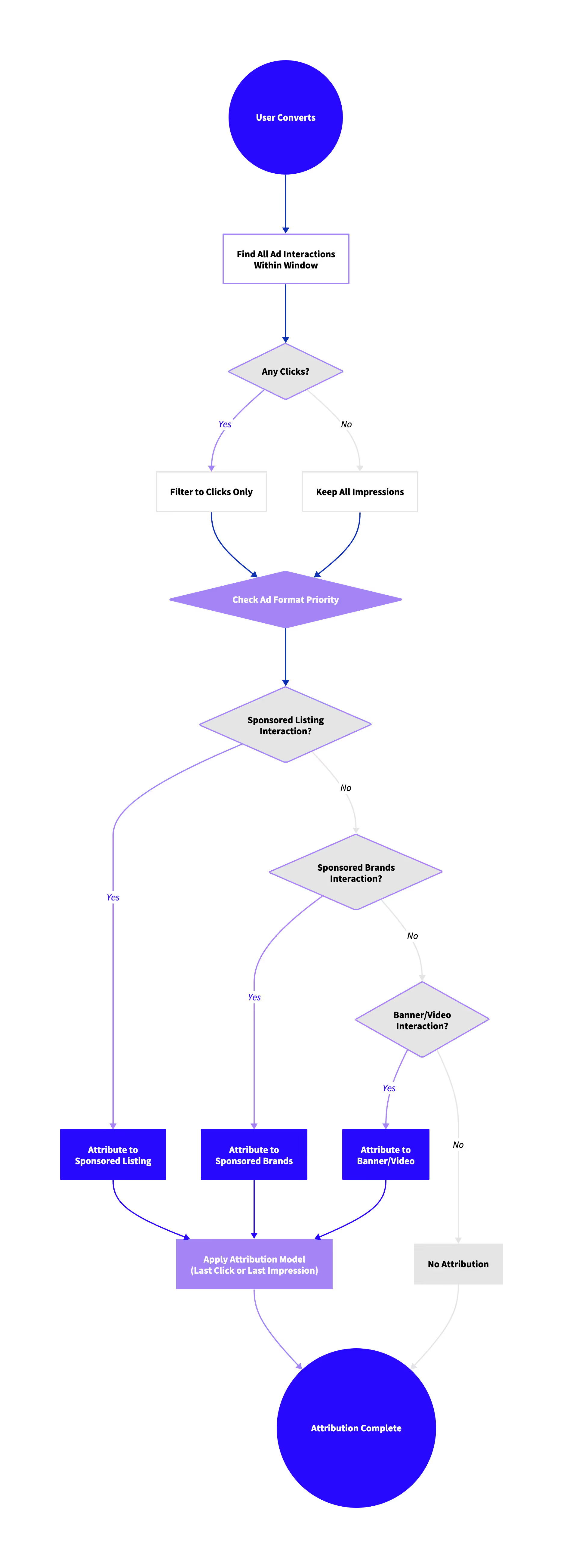
Ad formats serve different purposes across the customer journey. Sponsored listings drive purchases. Banners build awareness. Video ads spark interest. Yet until now, all formats were measured using the same attribution logic—making it difficult to see the true impact of each.
With this update, you can now tailor attribution models and windows per ad format, gaining a more accurate view of performance and improving how you allocate budgets across channels.
Why It Matters
Using one-size-fits-all attribution skews insights. It often favors lower-funnel formats like sponsored listings while undervaluing upper-funnel formats like banners and video ads.
By customizing attribution by ad format, you can:
- Understand how each ad truly contributes to conversions
- Allocate budgets based on actual impact, not assumptions
- Optimize strategies with more precision across the funnel
What’s New
You can now independently configure attribution settings for each of the following formats:
- Sponsored Listings
- Sponsored Brands
- Banner, Native, and Video Ads (grouped)
For each format, you can set:
- Attribution Model: Choose between last-click or last-impression
- Attribution Window: Customize from 1 to 90 days
These changes allow for more granular, format-specific performance analysis.
Key Benefits
1. Accurate Performance Measurement
Upper-funnel ads that influence customers over time—like banners or videos—can now be credited for delayed conversions. This leads to a clearer picture of how each format supports the customer journey.
2. Smarter Budget Allocation
With format-level insights, you can identify which channels deliver the highest return when evaluated under the right attribution rules. This allows for better-informed budget decisions.
3. Targeted Format Optimization
Instead of applying uniform KPIs across formats, you can measure each one based on its role in the funnel—ensuring your evaluation criteria match campaign intent.
How It Works
Attribution Models
- Last-click: Credits the final ad clicked before a conversion (default)
- Last-impression: Credits the final ad viewed, even without a click
Attribution Logic
- One ad interaction per conversion
- Clicks take precedence over impressions
- Sponsored Listings take precedence over other formats
- Attribution window configurable per format (1–90 days)
All reports will clearly reflect which model and window were used for each metric.

Practical Use Cases
Getting Started
To configure your attribution strategy:
- Connect with your Topsort account team to align settings with your business goals
- Apply changes based on your customers’ behavior and campaign objectives
- Monitor performance through enhanced reports
- Adjust over time using real campaign data and seasonal insights
Best Practice
We recommend starting with small changes—such as testing a longer attribution window for banner ads—before scaling across all formats. This allows you to observe impact clearly and fine-tune based on results.
For questions or setup guidance, contact your account manager. You can also find the full technical release notes here.


